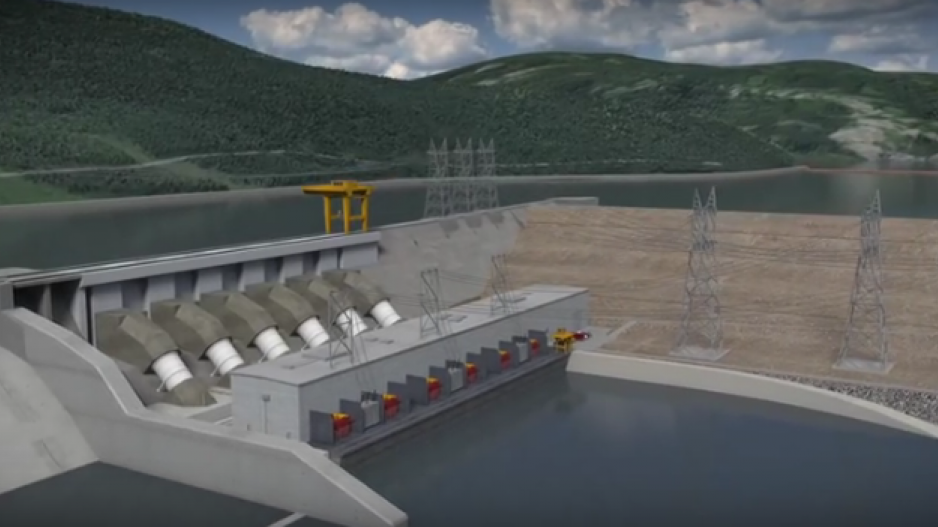In his “UBC Site C dam analysis misses mark on electricity demand” commentary (Business in Vancouver issue 1435; May 2-8), Blair King makes some significant errors that bear correcting.
Most egregiously, King argues that the combined cost of wind, transmission integration and storage “ends up being a lot more expensive” than Site C. Our study devoted 160 pages and hundreds of hours of analysis to comparing the costs of solutions with and without Site C under 30 different scenarios, and we found the opposite to be true.
King states that our analysis takes into account only the cost of constructing wind turbines and “omits the cost of the transmission and storage requirement needed to allow those turbines to supply us with electricity.” This is simply incorrect. On the contrary, our study (in Section 5.4.1) clearly distinguishes between the unit energy cost (UEC) of wind at the point of interconnection and the “adjusted UEC,” which also includes transmission network upgrade costs, transmission line losses and wind integration costs (note 258, page 91). Following BC Hydro’s practice in its Integrated Resource Plan, our analysis uses the adjusted UEC, which does include the additional costs required to bring wind power to the Lower Mainland.
King further asserts that “wind turbines are generally connected to storage units (like pumped storage).” This is also incorrect. There are almost 12,000 megawatts (MW) of wind power installed and operating in Canada. There is only one pumped storage facility in Canada: the 174 MW Sir Adam Beck station in Ontario, in service since 1957. There are no wind projects connected to energy storage facilities anywhere in Canada.
It is true that if BC Hydro meets more of the province’s energy needs using wind power, it will also need to develop additional supply- and/or demand-side resources to meet its capacityneeds. Large hydro developments like Site C contribute to meeting both energy and capacity needs, but there are other ways to meet these needs. The question is, which combination of resources results in the lowest costs?
To answer this question, our analysis examined energy and capacity needs separately, following the approach taken by BC Hydro and by utilities everywhere. Our findings confirm that portfolios of resources with more wind and additional capacity resources meet BC Hydro’s forecasted energy and capacity needs at lower cost than those portfolios containing the Site C project.
King is very impressed by the number of experts who contributed to the Deep Decarbonization Pathways Project and the Trottier Energy Futures Project (TEFP). The TEFP study recommends adding some 125,000 MW of hydro power (more than 120 projects the size of Site C) by 2050 – including 30,000 MW in British Columbia. We find it regrettable that these studies did not examine more carefully the costs, environmental effects or social implications – or even the technical feasibility – of the hundreds of new hydro projects that they recommend building.
Furthermore, the TEFP study has drastically underestimated the cost of these future unidentified hydro power projects. The study assumes an average cost per kilowatt (kW) far below that of the three large hydroelectric projects under construction in Canada (Muskrat Falls, Keeyask and Site C), which were supposed to be the most cost-effective projects in the country – and completely ignored their greenhouse gas (GHG) emissions and their other environmental and social impacts. According to its footnotes and bibliography, TEFP’s knowledge base for these future hydro projects appears to be limited to a single study prepared by an environmental consultant (EEM) for the Canadian Hydropower Association, which refuses to provide access to the study. It is discouraging that the TEFP failed to inquire more deeply into the resource program that it advocates, and even more discouraging that the government of Canada did not exercise due diligence in reviewing the study’s recommendations.
There is no doubt that more electricity will be needed for low-carbon electrification. But the question remains: from which resources? Choosing an uneconomic path actually makes such electrification less likely, because high electricity rates will discourage electrification. Ironically, by unnecessarily increasing electricity rates, Site C may well result in a lower overall rate of electrification and higher GHG emissions, as consumers choose natural gas or other cheaper options. •
Karen Bakker is director of the University of British Columbia’s Program on Water Governance and co-author of the Reassessing the Need for Site C report. The report's other co-authors are Richard Hendriks and Philip Raphals.




